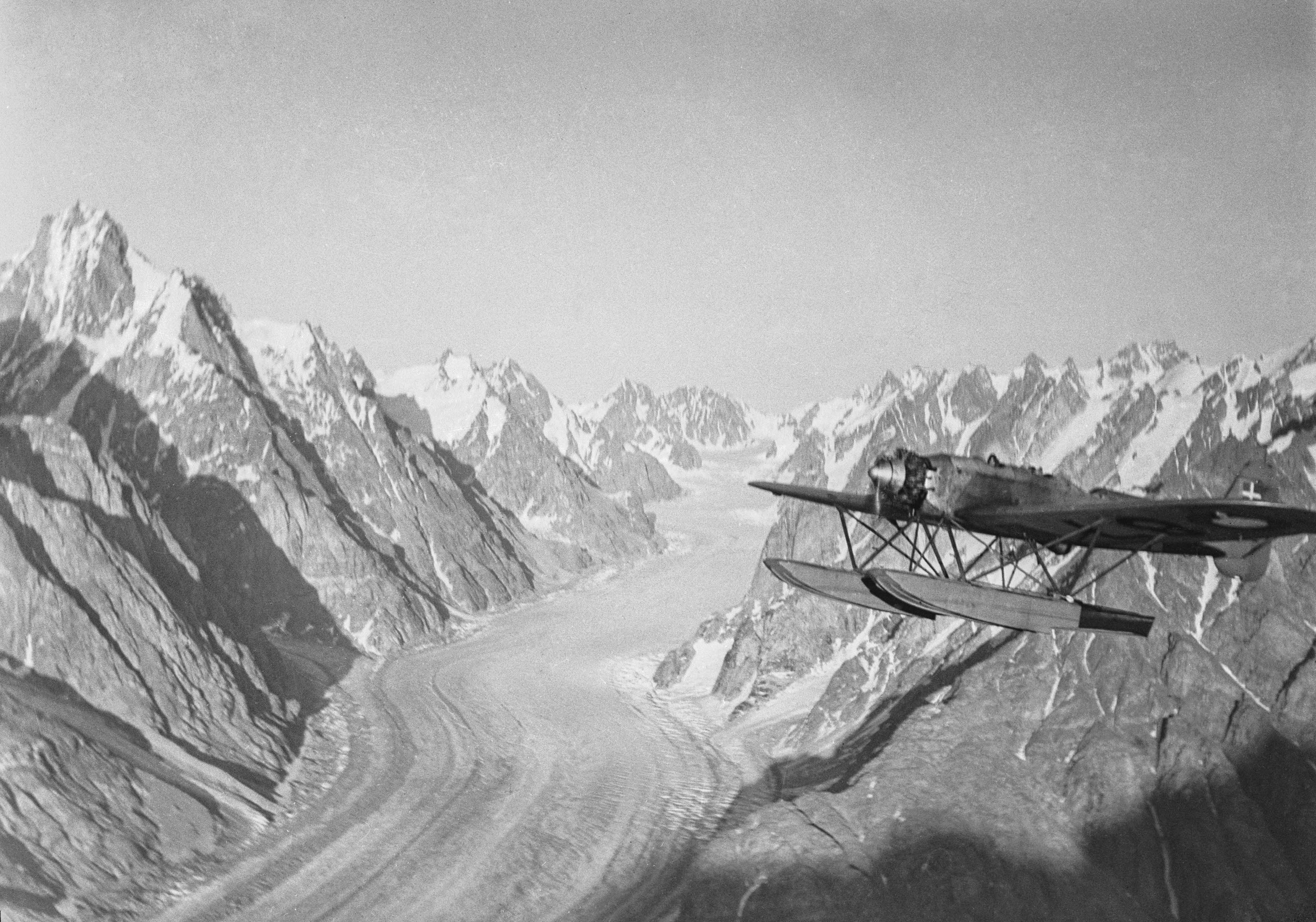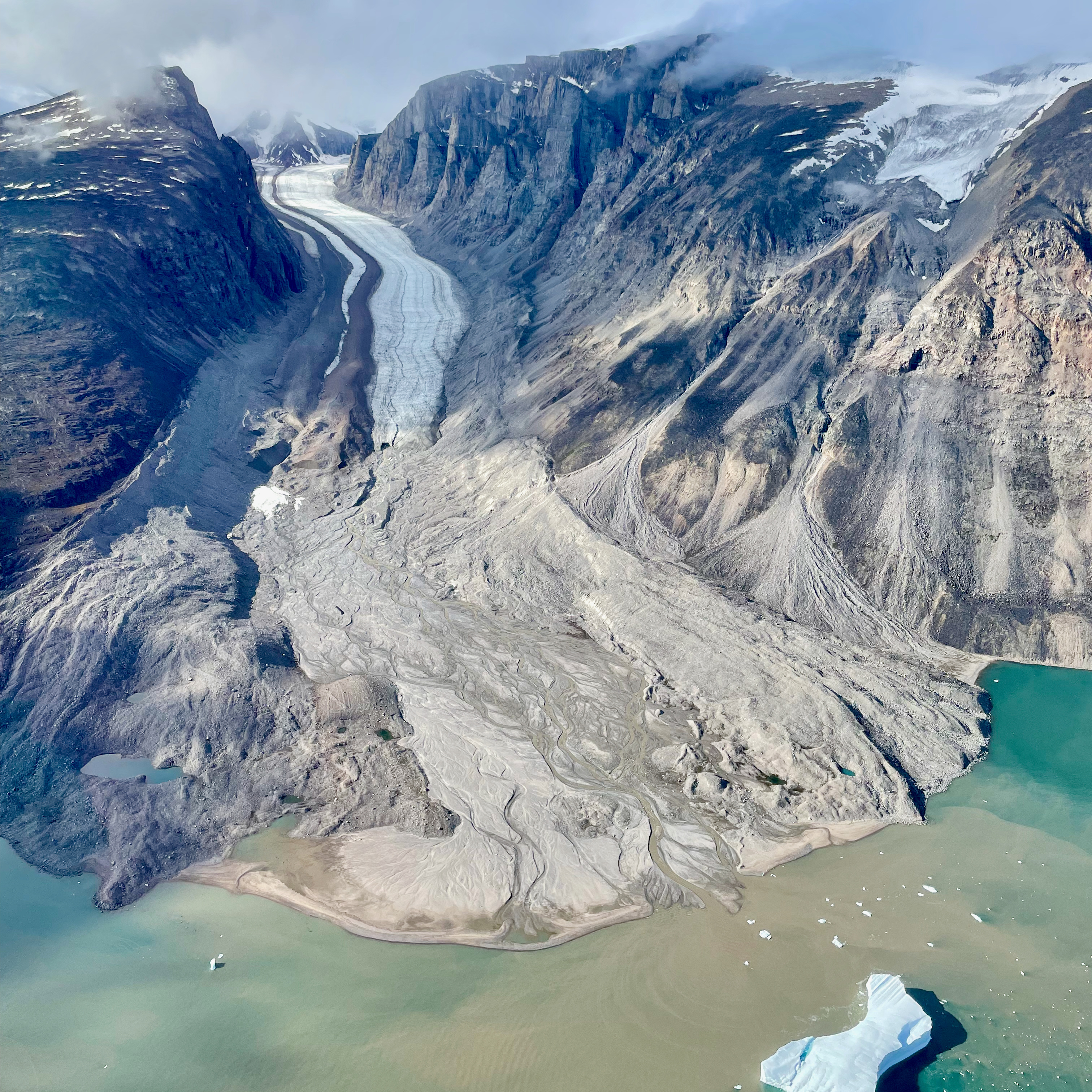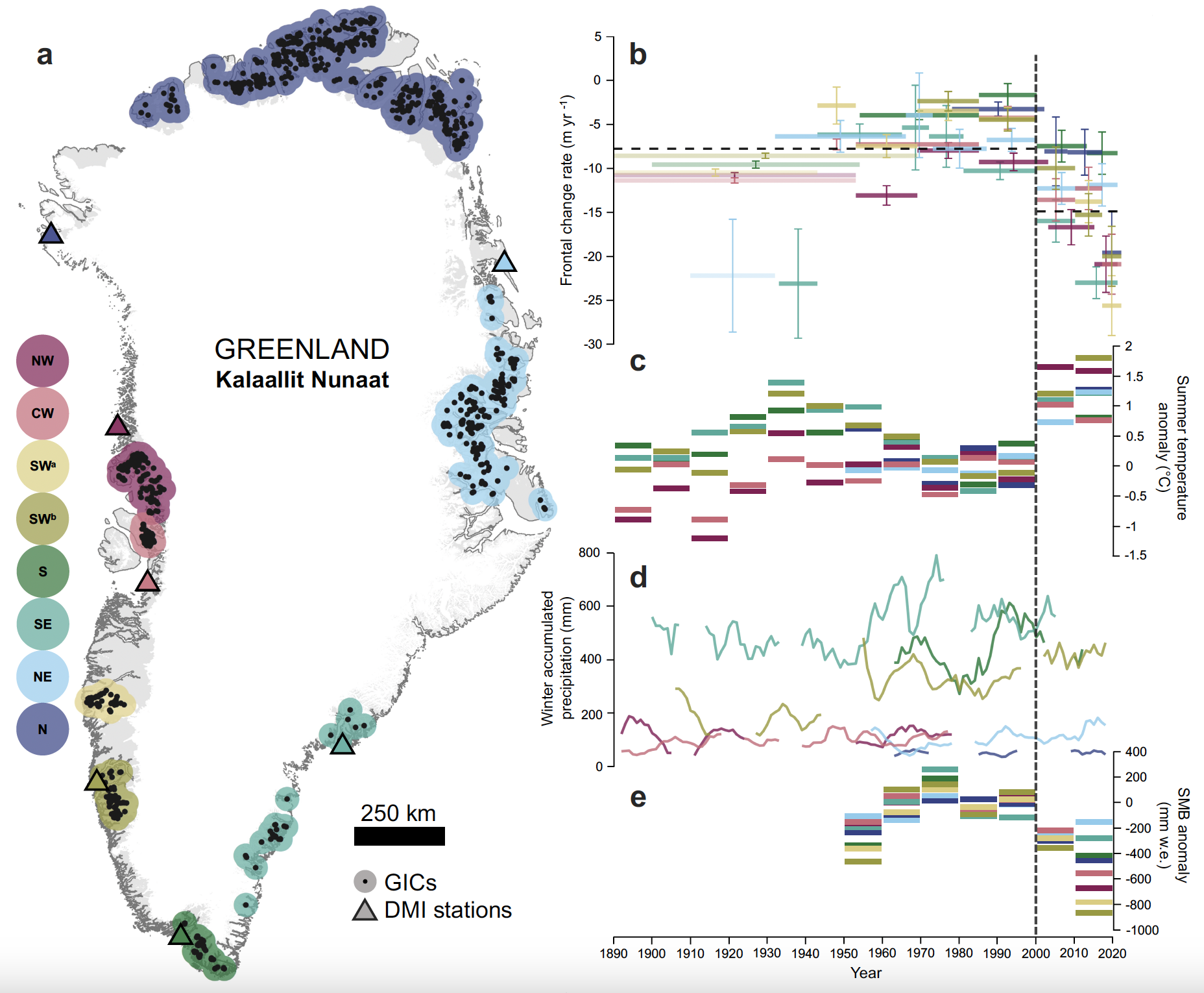Retreat of Greenland’s peripheral glaciers has accelerated
Published in Earth & Environment

In the early twentieth century, a series of expeditions set out to map the coast of Greenland—the world's largest island. Using state-of-the-art photographic and aircraft technology of the time, these systematic surveys captured over 200,000 photographs of Greenland's coastline (Fig. 1), and unintentionally the state of its peripheral glaciers (i.e., those that are distinct from Greenland’s central ice sheet; Fig. 2). These pioneering efforts are a testament to human exploration and offer a window into a time when quantitative observations of Greenland’s glaciers were largely absent. However, as the decades passed, these precious images were left within the walls of a citadel outside Copenhagen and remained forgotten for almost 80 years.

Figure 1. The oblique photographs were recorded in the 1930s from a Heinkel MKII hydroplane at up to 4,000 m elevation. (Credit: Arctic Institute of Denmark)
About a decade ago, these twentieth-century images, which held unexplored and invaluable scientific potential, resurfaced. Alongside declassified images, acquired by the United States military during World War II and the Cold War, these unique data gave us the opportunity to document change in Greenland's glaciers over a century timescale. Over the last several decades, the Arctic has warmed almost four times faster than the global average, with dramatic consequences for the Arctic cryosphere. Thus, these forgotten images are key in characterizing just how unusual recent glacier change is within this longer temporal context.

Figure 2: A retreating peripheral glacier on the west-coast of Greenland.
Even so, documenting past glacier states from historical imagery is difficult, requiring a long workflow and hundreds of hours of manual labor. In a multi-year and international collaborative effort, we documented the evolution of more than 1,000 peripheral glaciers across all of Greenland’s major regions over the past thirteen decades. We provide the first comprehensive picture of peripheral glacier change in this vulnerable and fast changing region of the world.
Over the course of ~130 years, the peripheral glaciers of Greenland have not remained static. Instead, they have undergone widespread retreat, with only a handful remaining stationary or showing signs of advance (Fig. 3). Our work also finds that their rate of retreat has accelerated in the twenty-first century and is roughly double that of the twentieth century, marking a new and ubiquitous state of rapid downwasting. Relative to their total length in the late twentieth century, peripheral glaciers in South Greenland have lost about 18.5% of their length over the last two decades. Peripheral glaciers in other regions of Greenland have also experienced substantial retreat, losing on average between 5-10% of their late twentieth century length. The recent retreat surpasses the magnitude of change observed in the early twentieth century in most regions.

Figure 3: Comparison of regional peripheral glacier frontal change rates and climate over the past ~130 years. a, Locations of peripheral glaciers and nearby Danish Meteorological Institute (DMI) stations. b, Frontal change rate (m yr–1) for peripheral glaciers in eight regions divided into observational periods: Northwest, Central-west, Southwest, Southwest, South, Southeast, Northeast, and North. Dashed black lines show the mean frontal change rate across all observations in the twentieth versus the twenty-first century. c, Summer temperature anomaly (baseline 1971–2000). d, Winter half–year accumulated precipitation. e, Regional surface mass balance anomaly (SMB; baseline 1971–2000) from MAR. Vertical dashed line denotes the turn of the twenty-first century. (Larocca et al. 2023)
Overall, our work highlights the exceptional nature of twenty-first century changes, and provides much enhanced confidence that, in most regions, the magnitude of recent glacier retreat is unprecedented in over a century. These changes can be confidently attributed to anthropogenic climate change, and with continued rise in atmospheric greenhouse gases and further warming, the already exceptional rates of retreat reported by our study are likely to be exceeded in coming decades. Our findings underscore that Greenland’s peripheral glaciers respond quickly to climate changes, meaning that swift and concerted efforts to limit further warming will reduce their loss and contribution to sea level rise.
Follow the Topic
-
Nature Climate Change

A monthly journal dedicated to publishing the most significant and cutting-edge research on the nature, underlying causes or impacts of global climate change and its implications for the economy, policy and the world at large.




Please sign in or register for FREE
If you are a registered user on Research Communities by Springer Nature, please sign in